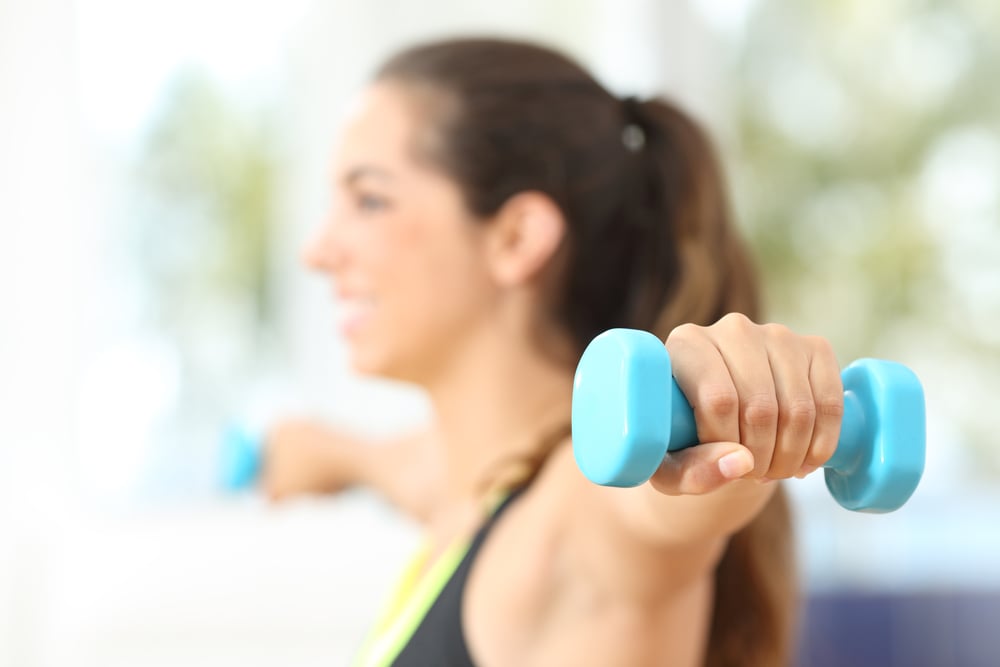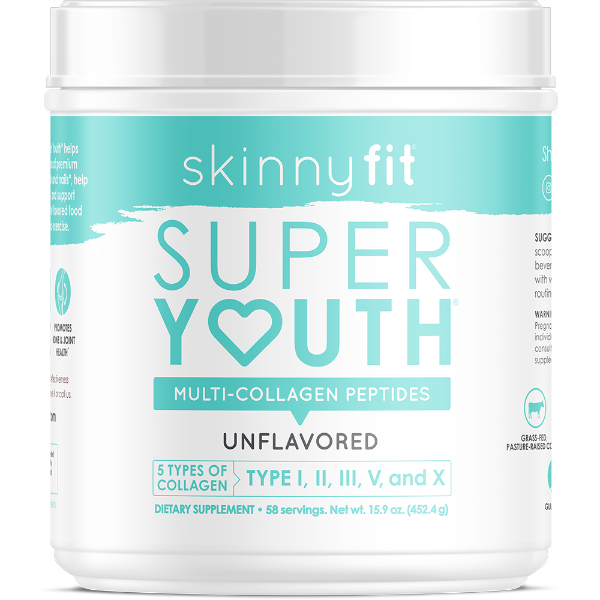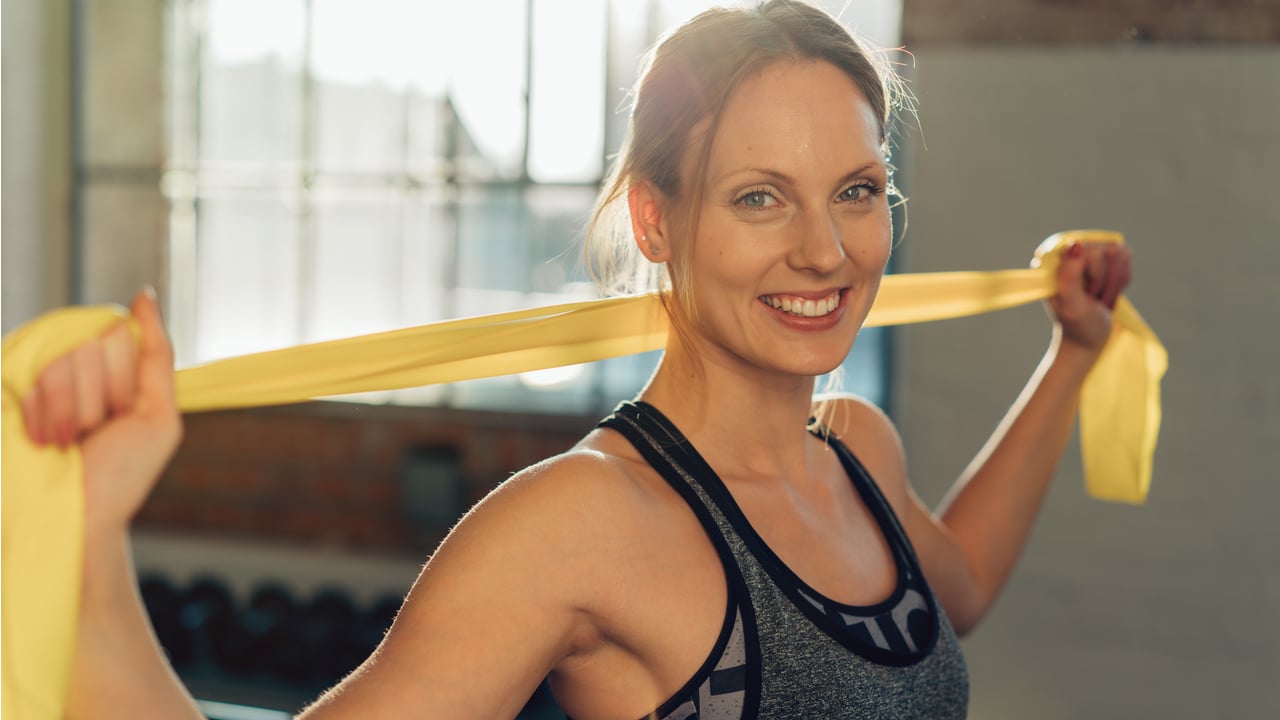From head to toe, there are well over 300 joints in your body, but the most dynamic, by far, is the shoulder joint. [1] Up, down, side-to-side, and all directions of circles, it has more range of motion than any other. But this awesome mobility comes with an obvious downside. So much range of motion makes for easy injuries, particularly with the group of muscles comprising the rotator cuff. If you’ve found yourself injured and wondering how to relieve shoulder pain, you’re in the right place.
Here’s what we’ll cover:
- Common causes of shoulder pain
- Signs you have a rotator cuff injury
- Ways to relieve rotator cuff pain
- 7 great rotator cuff exercises
 Causes Of Shoulder Pain
Causes Of Shoulder Pain
Due to the complexity of the shoulder joint, there are many causes of shoulder pain. Knowing how to relieve shoulder pain starts with knowing what they are. Here are some of the most common causes of shoulder pain:
- Impingement
- Inflammation
- Frozen Shoulder
- Dislocation
- Seperation
- Tendonitis
- Bursitis
- Labrum Tear
- Rotator Cuff Strain
- Rotator Cuff Tear
Sometimes, seeking professional advice for how to relieve shoulder pain will lead you to relief for other types of bone and joint ailments, such as:
- Osteoarthritis
- Rheumatoid Arthritis
- Bone Spurs
- Bone Fracture
Signs Of Rotator Cuff Injury
One of the most common—and frustrating—types of shoulder injuries is a rotator cuff tear. The rotator cuff is composed of muscles and tendons that surround your shoulder and allow you overhead mobility and strength. As such, the rotator cuff is very susceptible to tearing with repetitive overhead motion or falling hard on your shoulder.
Here are a few common signs that you have a rotator cuff injury and/or should begin rotator cuff exercises.
- Dull ache inside the shoulder
- Waking up at night with shoulder pain
- Difficulty or pain when combing hair or reaching behind your back
- Difficulty or pain when lifting or rotating your arm
- Reduced range of motion
- Decrease in arm strength
- Joint stiffness
- Muscle loss
If you’re experiencing these symptoms, go see a doctor.
My first-hand advice—Don’t delay seeking advice or treatment. From rotator cuff exercises to a list of actions you should not perform, sound medical advice goes a long way, not just in understanding how to relieve shoulder pain, but also how to not make your injury (and pain) worse.
Rotator Cuff Pain Relief
1. Rest & Pain Relievers (if Dr. recommend)
Rest can do you a lot of good, but it’s too-frequently ignored by suffering from shoulder pain. If your injury isn’t very severe, you may find that, combined with non-steroidal anti-inflammatory drugs (NSAIDs), resting your shoulder will have you back good as new.
2. Ice
As with many injuries, icing your shoulder can help reduce swelling and inflammation. Particularly when it comes to physical therapy, icing your shoulder after performing rotator cuff exercises can help reduce pain and improve joint health.
3. Collagen
When it comes to rotator cuff pain relief, many people (myself included) find collagen to be particularly helpful with rotator cuff impingement. Impingement occurs when inflammation, irritation, or compression of your shoulder’s tendons or bursa, a fluidly sac situated between bones. Collagen has also proven very helpful with shoulder pain caused by osteoarthritis. I personally take two to three scoops of SkinnyFit Super Youth collagen each day. Along with persistent rotator cuff exercises, I’ve noticed more strength, less discomfort, and consistent long-term rotator cuff pain relief.
4. Physical Therapy
A lot of people rely on physical therapy for rotator cuff pain relief when discomfort becomes too much. But the importance of seeking physical therapy early cannot be overstated, and it’s a smart idea to combine PT with collagen and anti-inflammatory supplementation. A physical therapist will examine your symptoms and guide you through rotator cuff exercises specifically designed for rotator cuff pain relief. We’ll dive into that in a second.
Beyond rotator cuff exercises, a good physical therapist will also explain the importance of things like posture, ergonomics, and adapting daily motions (eg: combing your hair) in ways that don’t further injure your shoulder.
5. Acupuncture
In my never-ending search for how to relieve shoulder pain, I’ve come to find acupuncture a favorite ally. Though not as dramatic as physical therapy, acupuncture can help noticeably relieve shoulder pain, and in the past couple decades it’s earned wide acceptance in the western medical community. Studies show that acupuncture helps ease the symptoms of rotator cuff tendonitis in athletes. [2]
6. Cortisone Shots
My first cortisone shot was my last. Though cortisone and similar injections do show to relieve pain for two to six weeks post injection, top doctors warn that injections don’t live up to clinically meaningful results. [3] Still, your doctor may suggest cortisone for rotator cuff pain relief, and it might be worth a try if nothing else has worked. At the very least, you may find comfort for a few months.
7. Surgery
If you’re diagnosed with a rotator cuff tear, you may be considering surgery. There are a few types of rotator cuff surgeries: open, which is very invasive and requires an extra-long recovery time; arthroscopic, which is less painful and usually heals faster; and mini-open repair, which is a newer approach that combines the two. [4]
While rotator cuff surgery is often successful, re-tears or surgical failures are too many to be comforted. In fact, more than 25% of rotator cuff repairs re-tear, usually within two years post-surgery. 😳 [5] Age, athleticism, size or tear, overall health, and your surgeon’s skill are all consequential factors in the outcome. [6] If you’re desperately wondering how to relieve shoulder pain, I do recommend speaking with a couple orthopedic surgeons, evaluating their different opinions. In my case, most surgeons recommended avoiding surgery and focusing on rehab, rest, and supplementation.
Rotator Cuff Exercises
A medical professional, such as an orthopedic surgeon or physical therapist, should be the one to diagnose you with a torn or damaged rotator cuff, and will be your most trusted guide for how to relieve shoulder pain. Avoid rotator cuff exercises as a means of rotator cuff pain relief without the OK from your doctor.
However, if you’ve been professionally advised to seek rotator cuff pain relief, or want to prevent rotator cuff damage in the future, the following rotator cuff exercises can help you manage or overcome shoulder pain.
Doorway Stretch
- Stand in an open doorway with both arms gripping the threshold at or below shoulder level.
- Step one foot forward for support and lean forward through the doorway until you feel a light stretch.
- Maintain a straight back and do not overstretch.
Unsheathing Sword Warmup ⚔️ (Sounds epic. But isn’t.)
- Cross your hand (of injured shoulder) across your body to the opposite hip
- Keeping your arm straight, raise it up and across your body in a motion similar to unsheathing a sword. Something practically everyone can relate to.
- Be sure to set your shoulder back and down and activate the rotator cuff muscles.
Internal Rotations
- Loop an elastic exercise band to a doorknob or other immovable fastening.
- Hold the band with your elbow bent 90º and your upper arm against your rib cage.
- Keeping your arm close to your body, rotate inward until you touch or almost touch your chest.
- Slowly return to starting position
External Rotations
- Loop an elastic exercise band to a doorknob or other immovable fastening.
- Hold the band with your elbow bent 90º and your upper arm against your rib cage.
- Keeping your arm close to your body, rotate outward (externally) about 45º. Do not over-rotate.
- Slowly return to starting position
Pro Tip: This rotator cuff exercise can be performed laying on your side, with a light free weight instead of a band.
Bonus Pro Tip: To help keep your arm secured at your side, try rolling up a hand towel and pressing it between your elbow/biceps and the side of your torso.
Lawn Mower Row
You can perform this rotator cuff exercise with a therapy band or dumbbell.
- Set your feet a little more than shoulder distance apart, and rotate so that the opposite leg of your injured arm is forward.
- With a free weight in one hand, lean into a forward lunge stance. Your back leg should be fairly straight as you lean over your front. Feel free to rest your free hand on your bent knee, but don’t support your weight.
- Like performing a row, bend your elbow and pull the weight up to your chest, keeping it close to your ribs while rotating your torso open.
- Reverse to complete one set. Always maintain control and do not use a dumbbell or band with more resistance that you can easily lift.
External Rotation With Arm Abducted 90º
- Attach a therapy band to a doorknob or other stable object.
- Stand with your elbow bent at a 90º angle directly out from the side of your body, facing the band.
- With your shoulder set back and down, rotate your arm until it’s in line with your head, being sure not to rotate beyond your year.
- Return to starting position slowly and with control.
Bent-Over Horizontal Abduction
- Lie on your stomach on a table or bed, or modified so that you’re stomach-down on a medicine ball, with your arm hanging down.
- With your arm straight, slowly raise it out to the side until you get to torso level. Be sure to contract with your anterior shoulder muscles and your shoulder set down and back.
- Lower slowly and controlled to the starting position. Repeat.
Mentioned In This Post
SkinnyFit Unflavored Collagen
Look and feel younger with Super Youth Multi-Collagen Peptides! This versatile collagen powder includes 5 collagen types from 4 natural sources to restore youthfulness from the inside out.

